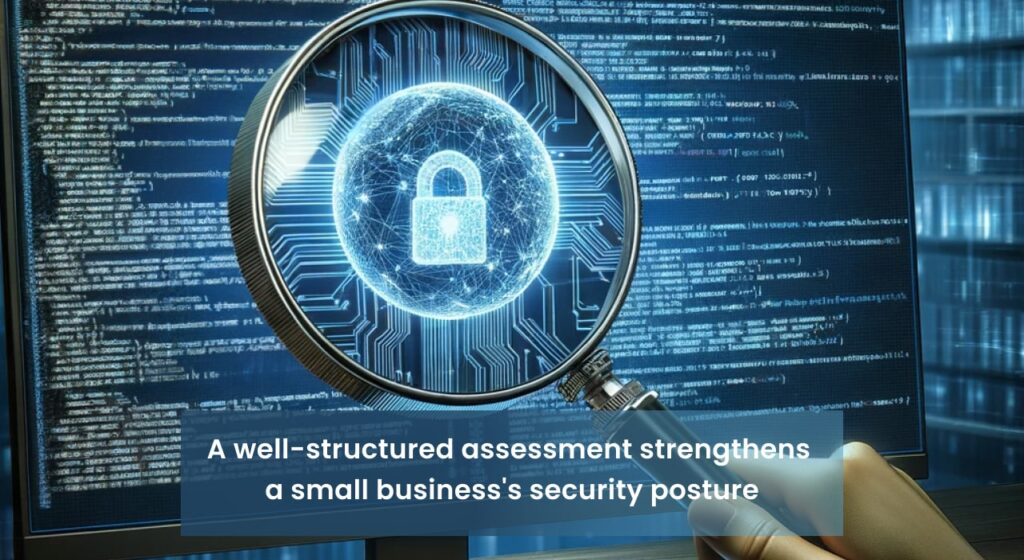
The contemporary business landscape is demonstrably shaped by the ubiquitous presence of technology and the internet. Small businesses, once reliant on localized operations, now leverage digital tools and online platforms to conduct transactions, manage data, and engage customers. A study by the FCC revealed that nearly 97% of small businesses in the United States utilize the internet, highlighting their dependence on this interconnected environment.
However, this digital embrace exposes small businesses to a burgeoning threat landscape. Cyberattacks targeting small businesses have risen by a staggering 429% in the past five years, according to a report by Kaspersky Lab. These attacks can cripple operations, result in significant financial losses, and erode customer trust. The Petya ransomware attack of 2017, for instance, caused an estimated $10 billion in damages globally, with small businesses disproportionately impacted due to their often weaker cybersecurity posture.
In this increasingly hostile digital environment, proactive measures are essential. Cybersecurity risk assessments offer a critical tool for small businesses to identify vulnerabilities, prioritize threats, and develop robust defenses. By systematically evaluating their digital ecosystems, small businesses can take control of their cybersecurity posture and navigate the digital landscape with greater confidence.
The Financial Toll of Cyberattacks on Small Businesses

For small businesses, the consequences of a cyberattack can be financially devastating. Data breaches, a common outcome of cyberattacks, expose sensitive customer information, leading to hefty fines for non-compliance with data privacy regulations. The IBM Cost of a Data Breach Report 2023 indicates the average total cost of a data breach for a small business to be $4.24 million, a significant financial burden for many.
Beyond data breaches, cyberattacks can cause substantial business disruption. Downtime resulting from cyberattacks, such as ransomware infections that lock businesses out of their own systems, can lead to lost sales and productivity. A study by the Ponemon Institute found that the average cost of cyberattack downtime for a small business is $8,641 per hour, highlighting the significant financial impact of operational disruptions.
Furthermore, cyberattacks can erode customer trust, a critical asset for small businesses. News of a security breach can damage a company’s reputation and deter customers from doing business with them. A study by Accenture revealed that 63% of customers would abandon a brand they felt had mishandled their data, emphasizing the potential long-term financial consequences of cyberattacks.
The financial burden doesn’t stop there. Cyber insurance premiums are steadily rising, particularly for businesses with weak cybersecurity practices. Insurance companies view such businesses as higher risk and adjust their pricing accordingly. By investing in robust cybersecurity measures, small businesses can not only mitigate the financial risks of cyberattacks but also potentially reduce their cyber insurance costs.
Benefits of Cybersecurity Risk Assessments for Small Businesses

Cybersecurity risk assessments offer a comprehensive approach for small businesses to fortify their digital defenses. These assessments function as a systematic security audit, meticulously examining systems and data to identify potential vulnerabilities. Much like a security gap analysis (target keyword) conducted on a physical building, a cybersecurity risk assessment exposes weaknesses in firewalls, outdated software, and inadequate access controls. By pinpointing these vulnerabilities, small businesses can prioritize their security efforts and allocate resources where they are most needed.
Risk assessments don’t simply identify weaknesses; they also empower informed decision-making. By analyzing the likelihood and potential impact of identified threats, these assessments allow businesses to prioritize risks based on their severity. This prioritization guides the development of targeted mitigation strategies, ensuring resources are directed towards addressing the most critical vulnerabilities. For instance, an assessment might reveal a high risk associated with outdated and unpatched software. This would prompt the business to prioritize patching or updating the software to reduce the risk of exploitation.
Beyond the immediate benefits of enhanced security posture, cybersecurity risk assessments offer additional advantages for small businesses. Regular assessments can demonstrate compliance with relevant data protection regulations. In today’s data-driven environment, customer trust hinges on a business’s ability to safeguard sensitive information. By demonstrating a commitment to cybersecurity through regular risk assessments, small businesses can foster trust and confidence among their customers.
AKey Components of a Cybersecurity Risk Assessment

A well-structured cybersecurity risk assessment serves as the foundation for a robust security posture. This section delves into the essential components that comprise a comprehensive assessment for small businesses.
A. Asset Identification and Classification
The cornerstone of any risk assessment lies in meticulously identifying all critical business assets. This encompasses not only physical hardware like computers and servers but also intangible assets like customer data, intellectual property and financial records. Once identified, these assets should be classified based on their sensitivity and value to the business. Highly sensitive customer data, for example, would warrant a higher classification than readily available marketing materials. This classification process guides the prioritization of security measures, ensuring the most valuable assets receive the strongest protection.
B. Threat Identification
With a clear understanding of critical assets, the next step involves identifying potential threats that could target them. The contemporary threat landscape for small businesses is vast, encompassing a range of adversaries with varying motivations. Common threats include malware malicious software designed to disrupt operations or steal data phishing attacks that attempt to trick users into revealing sensitive information and unauthorized access attempts by cybercriminals seeking to exploit vulnerabilities in systems. By understanding these prevalent threats, small businesses can tailor their defenses to address the most probable attack vectors.
C. Vulnerability Assessment
Having identified threats, a thorough assessment must uncover weaknesses within systems and security controls that could be exploited by these threats. This vulnerability assessment may involve employing automated vulnerability scanning tools to identify outdated software, misconfigured systems and weak password protocols. Additionally, penetration testing, which simulates a cyberattack, can unearth deeper vulnerabilities that automated scans might miss. By diligently identifying these vulnerabilities, small businesses can prioritize remediation efforts and bolster their overall security posture.
D. Risk Analysis
The final component involves analyzing the potential impact of identified risks on the business. This analysis considers two key factors: the likelihood of a particular threat exploiting a vulnerability and the severity of the consequences if such an attack were successful. Risk scoring methodologies can be employed to assign a numerical value to each risk, allowing for a data-driven approach to prioritization. For instance, a highly likely phishing attack targeting employee credentials would pose a greater risk compared to a less likely attempt to breach a heavily fortified network server. Through effective risk analysis, small businesses can allocate resources strategically and address the most critical threats first.
Conducting a Cybersecurity Risk Assessment in Your Small Business

A. Preparation
The success of a cybersecurity risk assessment hinges on assembling a well-rounded team with diverse expertise. IT personnel with a deep understanding of your technical infrastructure are essential. Management involvement ensures alignment with business goals and resource allocation. Including legal counsel can be valuable for navigating data privacy regulations and potential legal ramifications of security incidents.
Before embarking on the assessment, clearly define its scope and objectives. Will it encompass the entire organization or specific departments? Is the primary focus on identifying vulnerabilities or also assessing compliance with industry regulations? A well-defined scope ensures the assessment gathers relevant data and delivers actionable insights.
B. Data Gathering
Collecting comprehensive data about assets, threats, and vulnerabilities is the cornerstone of an effective risk assessment. This data can be gathered through various methods. Interviews with key personnel across departments can uncover valuable information about data storage practices, access controls, and potential security concerns. Surveys can be distributed to employees to gauge their awareness of cyber threats and their adherence to security protocols. Automated system scans can identify known software vulnerabilities and misconfigurations within your network infrastructure.
C. Analysis and Reporting
Once data collection is complete, the analysis phase involves meticulously examining the gathered information. This analysis aims to identify critical risks by evaluating the potential impact of identified threats exploiting discovered vulnerabilities in your systems. Consideration should be given to the sensitivity of the data at risk, the potential for financial losses, and the reputational damage a cyberattack could inflict.
The culmination of the assessment should be a clear and concise report documenting all findings and recommendations. This report should not only detail identified vulnerabilities and associated risks, but also provide actionable steps for mitigation.
D. Mitigation Strategies
The risk assessment report serves as the blueprint for developing a robust mitigation strategy. This strategy should encompass a range of measures tailored to address the identified risks. Implementing security controls like firewalls and access control systems can fortify your defenses. Investing in user training programs can equip employees with the knowledge to identify and avoid cyber threats. Establishing clear incident response procedures ensures a swift and coordinated response to security breaches, minimizing potential damage. Consider including a flowchart or diagram within the report to visually illustrate the overall risk assessment process, from preparation to mitigation.
Resources for Small Businesses

The ever-evolving cybersecurity landscape can present a daunting challenge for small businesses with limited resources. Fortunately, a wealth of free or low-cost resources exists to empower them to conduct basic cybersecurity risk assessments and bolster their defenses.
The U.S. Small Business Administration (SBA) offers a comprehensive online resource guide dedicated to cybersecurity for small businesses. This guide includes practical tips, downloadable checklists and educational materials to raise awareness and equip businesses with the tools they need to navigate the digital landscape safely.
The National Institute of Standards and Technology (NIST) Cybersecurity Framework provides a voluntary, risk-based approach to cybersecurity. This framework outlines a set of core functions that any organization can implement to improve their cybersecurity posture. While the NIST framework is not specifically designed for small businesses, it offers valuable guidance and can be adapted to their specific needs.
Industry associations and non-profit organizations also play a vital role in supporting small businesses with cybersecurity resources. Many organizations offer free webinars, downloadable toolkits and best practice guides specifically tailored to the challenges faced by small businesses. A quick online search can reveal a plethora of valuable resources readily available to assist small businesses in conducting basic cybersecurity risk assessments and taking proactive steps to safeguard their digital assets.
By leveraging these resources and fostering a culture of cybersecurity awareness within their organizations, small businesses can significantly enhance their digital defenses and navigate the online world with greater confidence.
In addition to the resources mentioned above, fostering a culture of security awareness within your organization is equally important. Our companion article, “Building a Culture of Security Awareness: Tips for Encouraging Employee Participation” provides valuable insights and practical strategies to cultivate a security-conscious workforce.
In the contemporary digital landscape, where cyberattacks pose a constant threat, conducting regular cybersecurity risk assessments is no longer an option, but a necessity for small businesses. These assessments function as a vital tool for proactively identifying vulnerabilities, prioritizing risks and implementing targeted mitigation strategies.
For businesses seeking a more comprehensive approach, engaging professional cybersecurity services can be a valuable investment. These experienced specialists can leverage advanced tools and methodologies to conduct a more in-depth analysis, uncovering hidden vulnerabilities and providing tailored recommendations.
Regardless of the chosen approach, the critical takeaway is the importance of prioritizing cybersecurity. By taking proactive measures and fostering a culture of security awareness, small businesses can significantly enhance their digital defenses, safeguard their valuable assets and navigate the online world with greater confidence. Start your journey towards a more secure future today by initiating a cybersecurity risk assessment and taking steps to fortify your digital defenses.
Categorized in:
Comments